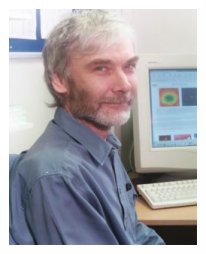Research Interests
 My research interest is the development of new technologies for precision tests of gravitation. The motivation behind this is clear. The conflict between quantum theory, which underlies the forces within the Standard Model of particle physics, and the classical theory of gravity is arguably the most serious problem facing physicists at present. The challenge to experimentalists is to search for possible ways forward by testing theories of gravitation at ever more precise levels. Given the weakness of the gravitational interaction compared to electromagnetic forces, this challenge demands ingenuity and innovation. However the tool of choice, up until recently, has been the Cavendish torsion balance which was developed in the 18th century. Over the span of my career to date, myself and collaborators have developed two new mechanical devices for gravitational physics: the first is the torsion strip balance which was used to measure Newton's constant of gravitation, G, (T.J.Quinn, C.C.Speake, S.J.Richman, R.S.Davis and A.Picard. 'A new determination of G using two methods'. Phys. Rev. Letts. 87, 111101, 2001) and the Spherical Superconducting Torsion Balance (SSTB) which we have recently used to place the best worldwide limits on forces coupling mass to intrinsic spin (G.D.Hammond, C.C.Speake, C.Trenkel and A. Pulido Paton 'New Constraints on short-range forces coupling mass to intrinsic spin'. Physical Review Letters 98, 081101, 2007). The torsion strip balance is the instrument of choice for looking for new long range forces and the SSTB is the ideal device for looking for new short range forces. In Birmingham we are employing the SSTB to measure the Casimir force and to search for a breakdown of the inverse square law of gravitation as suggested by recent String theories. At present both these experiments are funded. We are also planning to search for violations of Lorentz invariance using the torsion strip balance (shortly to be brought to Birmingham from France where the G measurements have now been completed). This project is also funded. We have been developing polarising homodyne interferometers to give a read-out of the angular position of the torsion balances. We have also developed a novel interferometer to measure linear displacement that is highly insensitive to the tilt alignment of the target mirror. This device is the basis of a displacement sensor for inertial control systems for satellites such as LISA. We are also developing a commercial device that we refer to as EUCLID. |